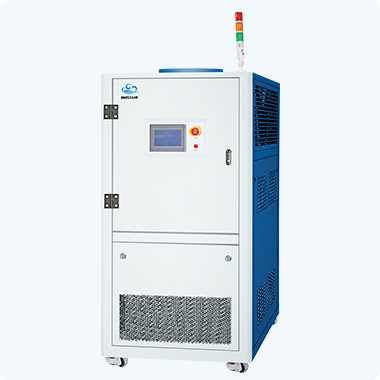Thermal management technology analysis of energy storage industry: Advantages and disadvantages of air cooling, liquid cooling and phase change cooling and their applications
With the rapid development of energy storage industry, thermal management technology is playing an increasingly important role in it. The stability and life of the energy storage system largely depend on its thermal management effect. At present, the main cooling methods of energy storage thermal management include air cooling, liquid cooling and phase change cooling. Below, let's follow energy storage battery cluster liquid cooling test machine manufacturers to understand these technologies in depth.
Air cooling technology: simple and reliable, widely used
Air cooling technology is widely used in container energy storage systems and communication base station energy storage systems with low power density. Its simple structure, reliability, and ease of implementation make it the first choice in many situations. By increasing the number of batteries, the air cooling system can obtain a lower working rate and heat production rate, so as to meet the cooling needs of the system.
The air conditioning structure of the air cooling and heat management system is diverse, including floor integrated, overhead integrated and split. These configurations are designed to ensure that the air conditioner effectively delivers accurate air to the battery pack for efficient cooling.
Liquid cooling technology: Efficient cooling, suitable for large systems
Compared with air cooling, liquid cooling technology is more excellent in heat dissipation effect. It uses water, ethanol, silicone oil and other coolants to dissipate heat through indirect contact between the flow channel and the battery cell evenly distributed on the liquid cooling plate. In this way, the heat can be effectively exported from the battery to ensure the stable operation of the system.
The core components of the liquid cooling system include chiller and liquid cooling plate. Chiller realizes circulating cooling of coolant through the cooperation of compressor, condenser, throttle and evaporator. The liquid cooling plate is the processing of raw materials such as copper and aluminum into corresponding plates, which are made by different production processes.
With the growth of demand for energy storage power stations with larger battery capacity and higher system power density, such as new energy power stations and off-grid energy storage, liquid cooling technology is gradually becoming the mainstream choice in the industry with its efficient heat dissipation performance and low failure rate.

Phase change cooling: compact structure, good cooling effect
Phase change cooling is a kind of cooling method that uses phase change material to absorb heat. It has the advantages of compact structure, low contact thermal resistance and good cooling effect. However, the phase change material itself does not have the ability to dissipate heat, and the heat absorbed needs to rely on other cooling systems (such as liquid cooling systems, air cooling systems). Therefore, when selecting phase change cooling, it is necessary to comprehensively consider the use of other heat dissipation systems.
In addition, the choice and cost of phase change materials are also important factors affecting the application of phase change cooling. The phase change materials with large specific heat capacity and high heat transfer coefficient have better cooling effect under the same conditions. However, phase change materials take up space and are expensive, so their advantages and disadvantages need to be weighed in practical applications.
peroration
In summary, air cooling, liquid cooling and phase change cooling in energy storage thermal management have their advantages and disadvantages. When choosing the right cooling method, it is necessary to comprehensively consider the specific needs of the energy storage system, working environment and cost. In the future, with the continuous development and progress of energy storage technology, we expect the emergence of more efficient and reliable thermal management technology to inject new vitality into the prosperity of the energy storage industry.
Energy storage liquid cooling temperature control technology application advantages
How to derive the test results of high and low temperature coolant tester
High and low temperature coolant test electrical source circuit connection method
The problem of water source during the use of high and low temperature coolant testing machine
Coolant filling and discharging method of battery module high and low temperature liquid cooling test machine
High and low temperature liquid cooling test machine solutions
